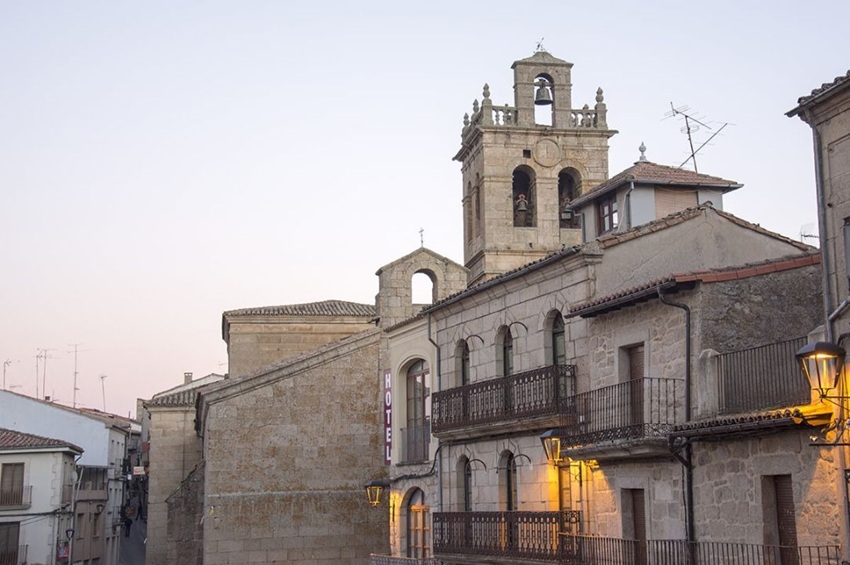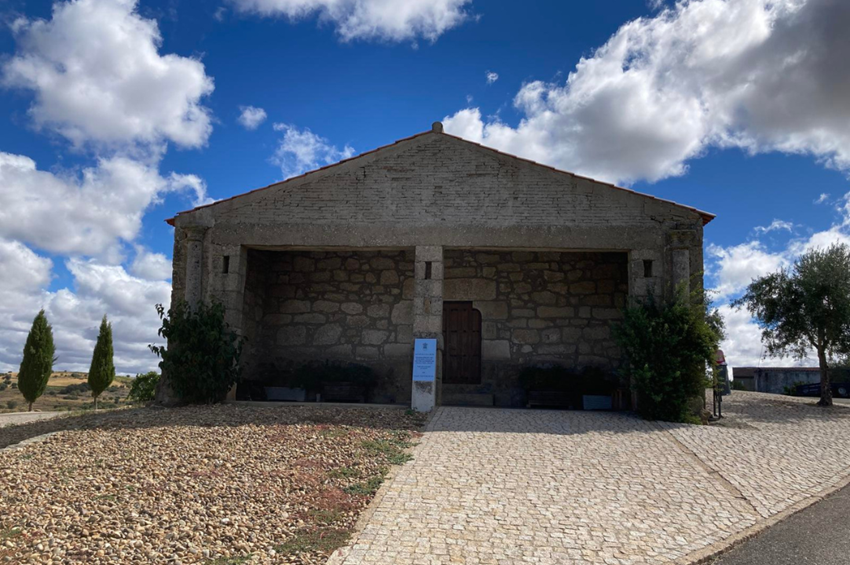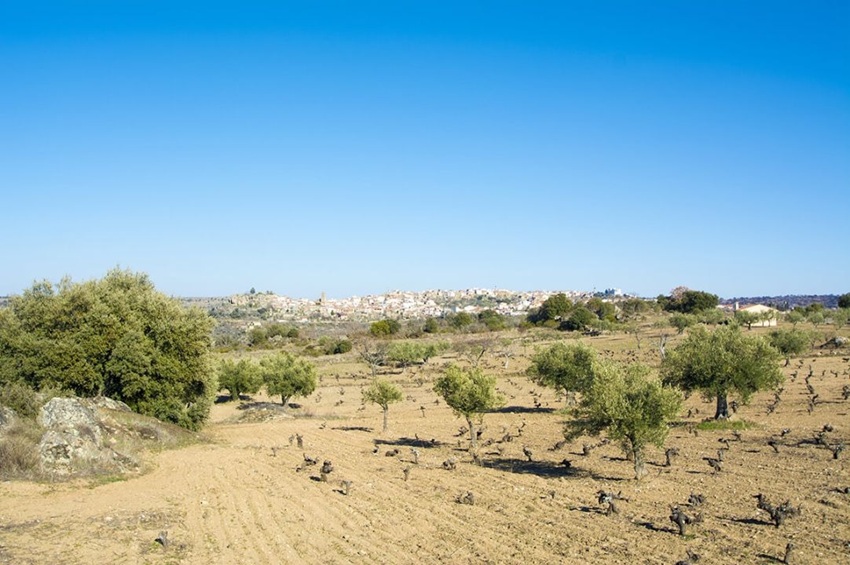The festivals of Fermoselle
In the heart of the idyllic landscapes of the Arribes del Duero, Fermoselle emerges, a village that, despite its modest size, shines as a true treasure trove of cultural and traditional heritage. Its narrow cobbled streets are interwoven with countless stories, deep-rooted customs and festivities which, defying the passing of time, are still preserved by all its inhabitants with the same enthusiasm and pride as on the first day.
These celebrations, so resonant and deeply rooted in the identity of Fermoselle, attract numerous visitors every year who are curious to discover what makes them so special. Through this article, we want to immerse you in the atmosphere of our vibrant traditional festivities, so that you can feel that special feeling we experience during these days, when every street exudes the pulse of its people and the richness of its cultural heritage.
We will tell you a little about some of them, from the most religious celebrations to the popular festivals that fill the streets with colour and joy. Would you like to discover how we, the people of Fermoselle, keep our culture and traditions alive?
San Agustín Festival, Fermoselle.
Origin and history.
When discussing the festivities of Fermoselle, we cannot begin with anything other than the one that honours its patron saint, Saint Augustine. It is, therefore, the main and oldest festival, considering the evidence found dating back to 1523.
The real reason for naming Saint Augustine as our patron saint is unknown, but the various legends surrounding the hypothesis share the theory that this event is due to the initiative taken by the first men who settled in the ‘Fuente del Álamo’. In the 16th century, they decided to build a parish church under the name of Saint Augustine.
This decision was met with great surprise by the town's residents, as they had been venerating other figures such as Saint Roch, Our Lady of the Rosary, and Our Lady of the Conception.
With so many unanswered questions, the story of Saint Augustine has been called ‘the story of a concern.’
When does St Augustine's begin?
The starting signal that announces that Fermoselle is celebrating is the ringing of its bell, but not just any bell, the Campana Torera.
Strategically located at the top of the town hall, this bell rings every 1st of August to announce the start of the San Agustín festivities.

The Torera Bell in the bell tower of Santa Colomba
But it is not just a simple festive prelude; the ringing of this bell accompanies and envelops every moment of the festivities, resounding before, during and after each scheduled activity. More than just a simple sound, this melody is received by the people of Fermoselle with a palpable feeling of indescribable excitement, marking the beginning of days full of joy and tradition.
The bull runs of Fermoselle.
At the heart of the San Agustín Festival, the real stars are the bulls, creatures that instil a festive spirit that attracts crowds to witness the famous bull runs. This event, which is the epicentre of the celebrations in the neighbouring regions and provinces, is the highlight for the people of Fermoselle during these special dates.
Although the essence of the route remains the same, over the years there have been changes to the itinerary, modifying its passage through the centre of the village, through the corrals on the outskirts, until it reaches its final destination: the historic Plaza Mayor in Fermoselle. This change of route has in no way diminished the excitement and tradition surrounding the bull runs, which remain a symbol of identity and pride for the local community.
Saint Augustine and his deep-rooted activities.
During the week of the San Agustín festival, Fermoselle is filled with an atmosphere steeped in tradition and celebration, where the same activities continue to take place. It all begins with the exciting chupinazo, which marks the start of the festive week, accompanied by the characteristic ringing of the ‘Campana Torera’ bell in the bell tower of Santa Colomba, a signal that resonates deep within the community.
The Traditional Castilian Mass, known as the ‘Gallito’, is an event that cannot be missed in the town's parish church, where the people of Fermoselle gather to honour their roots and strengthen their cultural identity. The traditional dance show is another highlight, where ancestral movements and rhythms come to life to the delight of all.
Wisdom and knowledge also have their place in these festivities, with the Cycle of Conferences in the Assembly Hall, where citizens share a space to listen attentively to topics of cultural and social interest, under the slogan #FermoselleEsCultura.
And, of course, we cannot forget the little ones, who also actively participate in the celebration. Various children's activities are designed to help them enjoy these holidays to the fullest and immerse themselves in the festive atmosphere from an early age. Traditional games workshops, magical summer cinema screenings and other fun activities give them the opportunity to create cherished memories and strengthen their connection with the traditions of their town. In Fermoselle, the celebration of Saint Augustine is much more than just a festival; it is a bond that unites generations and enriches the cultural fabric of the community.
San Albín Pilgrimage, Fermoselle.
Origin and history.
The pilgrimage takes place on the current esplanade of the chapel of Nuestra Señora de la Merced. We say ‘current’ because documents found have shown that this chapel was formerly known as the ‘chapel of San Albin and San Adrián’.
As with the origin of the San Agustín festivities, we do not have a clear explanation for the origin of the San Albín Pilgrimage. What we can share with you is the theory that it is considered a travelling festival. The reason for this is the constant relocation of one of the arches of the chapel, the most iconic one containing the message: ‘the year 1096 ended, with P. Fermoselle as steward’.
It was not until the early 19th century that it was moved to its current location.
What is the San Albín Pilgrimage in Fermoselle?
The Pilgrimage of San Albín, held every Easter Tuesday, is marked as an emblematic moment in the festive calendar of Fermoselle, just two days after the impressive Holy Week and in tune with the triumphant arrival of spring.
On this special day, the residents of Fermoselle walk to the small chapel of San Albín, built in 1553 on the Zamora road, on the outskirts of Fermoselle. There, in an atmosphere of contemplation and devotion, the Eucharist is celebrated in honour of San Albín, followed by a break to enjoy the most representative delicacies of the local cuisine.

Ermita de San Albín (Image rights Wikiloc: Mireia Vall)
Among the delicacies that adorn the table, the traditional liqueur, the aroma of coffee, the delicious periquillos (fried dough sticks), boiled eggs and the popular hornazo (a type of pastry) stand out, all accompanied by characteristic Fermosella melodies such as ‘La Coronela’ and the chords of the classic flute and drum. If you would like to explore more about the region's exquisite cuisine, we invite you to take a look at our latest post, where you will find a feast of flavours that will delight your palate.
One of the most surprising products during this celebration is the boiled egg, an iconic ingredient that is never missing from this festival. Although its exact meaning is a matter of debate, it is believed that its presence is due to its ease of transport without being damaged on the way to the countryside. However, other theories support that this tradition is due to its meaning, as it is considered a symbol of mourning and is also served at wakes and after funerals.
Finally, another of the main dishes is the Hornazo, filled mainly with chorizo, which is the undisputed star of this festive day. Its consumption is justified by the end of the period of abstinence from meat, as the Pilgrimage of San Albín marks the beginning of spring and the end of the seven days during which the consumption of meat was prohibited.

Hornazo stuffed with chorizo, typical of the cuisine of Arribes del Duero
Pilgrimage of Santa Cruz, Fermoselle.
Origin and history.
Let us begin by exploring the origins of this iconic pilgrimage in Fermoselle, which is celebrated on Whit Monday. To understand its significance, it is crucial to first understand what Pentecost represents.
In Jewish tradition, there is a legend that tells of the Holy Spirit coming down to Earth to meet Moses on Mount Sinai and give him the Ten Commandments. This event, marked in history, establishes the importance of Pentecost.
In the Christian context, Pentecost occupies a prominent place, just after the Easter and Christmas holidays. It is a crucial moment that deserves to be celebrated and understood in its context. Now, let's go back to learn about the origins of the pilgrimage in Fermoselle and, secondly, we will tell you what is currently done to celebrate it.

Olive groves and vineyards, typical of the Arribes del Duero region
We do not know how certain this is, but according to what we have heard since childhood, it all began one morning on the banks of the River Duero. As usual, the farmers were working their vineyards and olive groves when one of them was surprised by a kind of log floating down the stream. When he got closer to the bank and squinted his eyes, he was even more surprised to see that what he thought was a log was nothing more and nothing less than a cross with a crucified Christ.
Overwhelmed with amazement and a mixture of curiosity and fear, he announced the news to all his companions. When they verified that the farmer's words were true, they decided to remove it from the river so they could see it clearly.
After several failed attempts, due to the strong current, the sharp stones and the limited means at their disposal, they succeeded.
Out of fear, confusion or simply respect, they decided to hand it over to the authorities in Fermoselle. Days later, not knowing what to do with such a discovery, all the residents decided that the best thing would be to build a temple themselves and place it inside.
And so it was that, with the union of the whole village and their scarce resources, they built the chapel of Santa Cruz, in an elevated area facing the neighbouring country, Portugal, as this was the area from which the Christ seemed to come.
The traditions of the Santa Cruz Pilgrimage.
A legend, as surreal as it may seem, has been passed down year after year among the people of Fermoselle as a divine miracle that must be honoured. Another epilogue that completes this legend is the idea that it was the Portuguese themselves who threw the Crucified Christ into the River Duero because of his ugliness.
And after so many legends and digressions, you may wonder: what do you do to honour the Christ of Pino?
Well, we'll answer that question for you. On the day of the pilgrimage, all the residents, from children to the elderly, follow the same route. They set off from the meeting point in the village, the Playa Mayor, and walk along beautiful paths full of vegetation until they reach the key point, the chapel of Santa Cruz. Once there, all the residents pay homage to the Cristo del Pino.

Views of the River Duero
This is a very moving religious ceremony for the people of Fermoselle, accompanied by classic traditional melodies linked to traditional festivals. The rhythm and lyrics are so often repeated that they have become the symbol of Fermoselle, and are an essential part of any kind of event.
And as a grand finale, this emotional tradition culminates in the tasting of a variety of homemade products, a gastronomic treasure that reflects the identity of Fermoselle.
This emotional tradition culminates with the tasting of a variety of homemade products, a gastronomic treasure that reflects the identity of Fermoselle. It is everyone's wish that these customs will endure over time, but if one day they were to fade away, the Christ and his chapel would remain eternal witnesses to the essence of Fermoselle and its people.
Traditional festivities in Fermoselle and their great prestige.
In our journey through the most emblematic festivities of our beloved town, we have explored three jewels of our culture rooted in history and legend. From the Fiestas de San Agustín to the pilgrimages that have stood the test of time, we have witnessed how ancient legends passed down from generation to generation have shaped our most cherished customs.
It is truly amazing how these legends, full of paradigms and surreal facts, have kept our cultural identity alive and brought all the inhabitants of Fermoselle together to celebrate them.
These are unique moments, amidst the magical landscapes of the Arribes del Duero, sharing laughter, anecdotes, typical products, participating in popular activities and remembering that special music that fills us with joy. It is on these special occasions that community ties are strengthened and an inexplicable bond is created between us.
Looking to the future, at each pilgrimage, we all share the same desire: that these cultural festivities never fade away, but flourish with renewed vitality for future generations. May our children and grandchildren enjoy these traditions in the same way we do, or even find in them an even greater source of inspiration and joy.
We invite you to discover for yourself the countless stories of our wonderful legendary town, to let yourself be carried away by its traditions, food and dances. And for that, there is no better place than our Posada Doña Urraca.
A perfect place where you can forget about everything, relax in comfortable rooms, sample exquisite traditional recipes made with local produce and, best of all, enjoy peaceful surroundings surrounded by nature and breathtaking views of the Los Arribes del Duero Protected Natural Park, which will help you disconnect from your busy routine.
What more could you ask for?
We look forward to seeing you!

